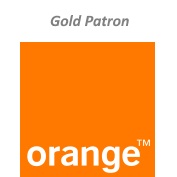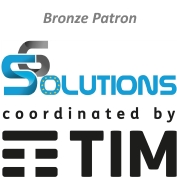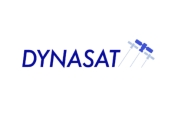
DYNASAT
Dynasat spectrum sharing and bandwidth-efficient techniques for high-throughput mimo satellite systems
The European Commission’s “Connectivity for a Competitive Digital Single Market – Towards a European Gigabit Society” has set ambitious goals of deploying smart and sustainable networks and services for the success of Europe’s digital economy. Satellite Communication Systems (SatCom) are fundamental components supporting these goals. 3GPP is creating Release 17 specifications, which can also be used for SatCom systems, referred to as Non-Terrestrial Networks (NTN). NTN topologies are based on high-altitude platforms and low Earth orbit (LEO) and geosynchronous orbit satellites. NTN may for example complement terrestrial networks (TN) with network coverage in remote areas over sea and land where terrestrial coverage is absent. DYNASAT project objective is to research, develop, and demonstrate the use of innovative techniques for bandwidth-efficient transmission and efficient spectrum usages for next generation satellite networks. Selected innovative technologies include Multiple-Input Multiple-Output (MIMO) schemes, multi-connectivity (MC) and coordinated/non-coordinated spectrum sharing between TN and NTN. LEO satellite system operating on S-band (around 2 GHz) frequency range providing services for handheld User Equipment (UE) was selected as a baseline for evaluations.
The demonstration consists of three sub-demonstrations:
1. Multi-connectivity for 5G Non-Terrestrial Networks (NTN) satellite scenarios,
2. Coordinated Dynamic Spectrum Access (DSA) in a hybrid Terrestrial and Non-Terrestrial environment
3. Non-coordinated spectrum sharing in a hybrid Terrestrial and Non-Terrestrial environment.
Demos 1 and 2 use a detailed non-real time system/network level simulator developed for hybrid 5G TN and NTN network scenarios. Magister SimLab web/cloud-based simulation service (https://magistersimlab.com/) is used to highlight the simulation scenarios and main outputs (statistics). Magister SimLab is also used for animation-based demonstration which highlights the main elements of the demonstrated features and their benefits. Demo 3 is carried out using a web browser. The demonstration website consists of the following parts: technical parameters, map-based user interface, Key Performance Indicator (KPI) and performance graphs. In the demonstration, the user can select between French regions, French mobile operators, and their 3GPP generation. The locations of the base-stations inside the selection are shown on the map. The tool computes which LEO satellite beams can be active around the selected mobile network deployment so that the satellite beams do not cause harmful interference to the terrestrial mobile network. The section for KPIs and performance graphs visualizes the performance of the system in terms of coverage, interference, capacity and Spectrum Utilization Efficiency. The demonstration focuses on showing the benefit to an actual user of the system, rather than technical details. Highly visual web-based graphical demonstration tools are used.
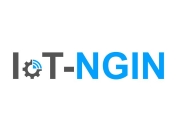
IoT-NGIN
Next Generation IoT as part of Next Generation Internet
The extensive use of IoT and AI challenges the capacity of network, telecommunication and cloud infrastructure, while the increasing emergence of new resource-hungry services with stringent latency/performance requirements, along with privacy concerns, urges for bringing part of the intelligence close to the data sources. Thus, IoT-NGIN provides tools to offer Machine Learning (ML) functionality as a service, supporting edge intelligence with ML operations performed at the edge or far edge IoT devices. Digital Twining at the edge is also crucial, in order to provide easy and fast access to IoT data without moving them outside the corporate administrative domain. Moreover, IoT-NGIN offers tools to strengthen IoT cybersecurity, which can be challenged by IoT or AI-related attacks.ndary MV/LV Distribution Substation (https://youtu.be/JcLEF3T5nLg).
The demos relate to the IoT-NGIN Smart Agriculture Living Lab. On-device intelligence will be presented: a) on a drone able to detect crop diseases in real time based on crops’ images captured while flying b) on an Automated Guided Land Vehicle (AGLV), able to detect and avoid obstacles, while acting as crop carrying assistant. In both cases ML models on the device will support the crop disease and the object detection, respectively. This functionality will be showcased through slide presentation, potentially supported by videos of current prototypes. Moreover, intelligence based access control will be demonstrated on the SynField IoT node. The user will scan the node and will be only granted access if the user has privileges to access data of this device, installed in close proximity to the user. In case of success, the user will be able to visualize device data, through its Digital Twin, running at an edge server. This will be a video demonstration. Last, IoT devices, such as SynField nodes, drones, AGLVs, etc., which are connected on a common network, will be scanned for potential network vulnerabilities. The user will access the scan results via the devices’ digital twin. This will be a video demonstration.
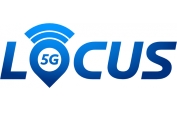
LOCUS
Location information is a pivotal service of 5G and will enable a plethora of new location-dependent use cases in 6G networks. Indeed, 3GPP is targeting a very high level of location accuracy since Release 16 and there is a growing interest in location-based analytics, such as user-centric analytics (e.g., people counting, dynamic map creation, flow tracking, fusion of spatiotemporal data with multimodal information, and anomalous behavior detection) and network-centric analytics (e.g., location-aware network planning, fault detection, resilience, location-aware diagnosis and troubleshooting). The H2020 LOCUS project builds on the functionality of 5G infrastructures to provide accurate and enhanced location information, derive more complex features and behavioural patterns out of raw location, and expose them to applications via simple interfaces. Localization, together with analytics, and their combined provision “as a service”, will greatly increase the overall value of the 5G ecosystem, allowing network operators to better manage their networks and to dramatically expand the range of offered applications and services. The overall approach has the main goal to provide a flexible and composable platform where the various positioning and analytics functions can be combined while facilitating sharing and re-use of key functionalities across different localization services.
A first live demo will showcase in real-time the LOCUS Platform capabilities, onboarding, instantiation, orchestration and monitoring of localization enablers and location-based analytics functions. Accurate real-time positioning of user devices will be shown by leveraging 3GPP and non-3GPP measurements, and then used to generate contextualized indicators for network-based analytics. A camera located at the University of Malaga will show a user moving and a live map showing the estimated position, along with a graphical interface with the number of visible reference points of each technology, generated indicators, KPIs, and coverage maps. A second demo will include a live presentation of flow monitoring analytics functions’ results for the identification of Points of Interest (PoIs) and paths using as input the results of a fingerprinting function. These will be complemented with user/PoI/path analytics, such as POI density, velocity, direction, presented through User Interfaces acting as 3rd party applications developed on top of the LOCUS Platform. Additional LOCUS outcomes will be presented, such as results on enhanced 5G positioning, cloud-native uncertainty quantification, and network-centric analytics. Such results will leverage radio measurements, 5G emulators based on Open Air Interface, as well as synthetic 5G data generated in conformity with the latest 3GPP releases.

5GMediaHUB and MARSAL
The E.C. 5G-PPP ICT-41 Innovation Action coined the term “NetApp” to describe VNF-based solutions tailored to verticals. The challenge of defining NetApps is undertaken by 9 ICT-41 projects, that provide enhanced experimentation infrastructures on top of which third party experimenters, SMEs and other stakeholders have the opportunity to test vertical applications in an integrated, open, cooperative and fully featured network platform running across multiple domains and tailored to specific vertical use cases. 5GMediaHUB is one of these projects, targeting the media vertical domain with a set of 6 media specific NetApps that implement some key middleware functions (i.e., streaming, CDN, media gateway, 360 VR support) which are offered to verticals via open Northbound APIs. NetApps are also expected to play an important role in B5G projects, hence a liaison was established between 5GMediaHUB and the ICT-52 MARSAL project, to study the deployment of NetApps (and specifically the 5GMediaHUB PaaS NetApp) in MARSAL’s Virtual Elastic Infrastructure.
The demo setup will include the following elements: • An Amarisoft 5G gNB will offer the network access, allowing a set of UEs (5G capable smartphones) to be connected to a private 5G network. • A virtualized backend server hosting hypervisor services and ETSI OSM within Linux Containers (LXD). Kubernetes clusters will be deployed within VNF hosts. • Ektacom’s NOMADE gateway software suite will be deployed within the virtualized backend server a NetApp. The Nomade Viewer will be deployed at a PC • A set of UEs with the NOMADE UGC Android application will be deployed and connected to the 5G gNB. The following application scenarios will demonstrated: • A User Generated Content (UGC) scenario, where Android 5G smartphones are leveraged to capture 4k video streams that are streamed in real time to the Nomade NetApp; one is selected for broadcasting. • A demo of the 5GMediaHUB NetApps repository and Portal application, made available to the audience to interact with. • A Virtual Elastic Infrastructure demo with ETSI OSM acting as the Resource Orchestrator, triggering scale-in and scale-out of VNF hosts, and adapting Kubernetes clusters to changes in application demand. • A rendering of the 5GMediaHUB 360 VR NetApp, showcasing a remote teacher in a virtual classroom.

5G-MOBIX
5G for Cooperative & Connected Automated Mobility on X-border corridors
5G-MOBIX aims to match the benefits of 5G technology with advanced CCAM use cases in order to enable innovative, previously unfeasible, automated driving applications with high automation levels, both from a technical and a business perspective. The project will actively contribute to the EU 5G Action Plan to set Europe as a technology leader on the path toward commercial deployment of 5G. This will lead to a faster deployment phase of the European highways leveraging on the proposed innovations, which is perfectly in line with the strategy of the deployment mobility CEF program of the EC.
The 5G-MOBIX exhibition booth will promote the project and its use cases/user stories and show videos of past demonstrations at different trial sites (the Netherlands, Germany, Finland, etc.) on the booth’s screen. The exhibition booth will also serve as an opportunity to inform stakeholders (and the general public) of the possibility to visit the project’s static vehicle (FORD truck) outside the venue for a tour, explaining the different functions, sensors, OBUs, etc. Public Adequacy: The project supports the transformation of the automotive industry through the integration of vehicles on highways and how European citizens will use them in the near future.
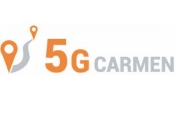
5G-CARMEN
5G-enabled corridor cross border trials – The 5th generation of mobile networks promises significant qualitative and quantitative advances for multiple vertical domains, including the fast-evolving automotive sector. 5G-CARMEN, as one of the 5G-PPP Research Projects co-funded by the European Commission, have assessed these advances for Cooperative Connected and Automated Mobility (CCAM) applications in cross-border and/or multi-operator environments. Coming now to a conclusion, the projects have developed a deep understanding of the key cross-border challenges and the expected performance of corresponding solutions that were tested in the field across a series of European cross-border corridors, but also, national multi-operator trial sites.
The project is trialing challenging use cases for autonomous driving supported by 5G technologies, deploying solutions to maintain service continuity and minimize connection interruption when moving across country borders. The project will present the key findings and results collected through live pilots performed along the highway corridor connecting Bologna to Munich, with focus on activities performed at the borders between Italy and Austria, and Austria and Germany. Two use cases are considered, cooperative and automated lane change manoeuvres, and cooperative and automated inlane manoeuvres, that leverage on 5G connectivity and services running on the MEC platforms deployed in the three countries, to extend the perception of vehicles and support the manoeuvre execution with SAE Level 4 automation. Service continuity across borders and minimization of service interruption is achieved through the developed service orchestration platform, and the deployment of mobile network solutions for local breakout (LBO) and Fast Network Reselection. Video demonstration of the trialed use cases and of the supporting services and technologies will be provided (e.g. Back Situation Awareness function running on the project Edge Orchestration platform, Precise Positioning, Predictive QoS), analyzing the achieved KPIs and offering insights on the lesson learnt in the project time-frame.
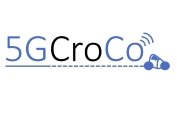
5GCroCo
“Vision Zero” initiatives across the world purse the goal of eliminating road accidents by 2050. Assisted and automated driving systems have a tremendous impact on safety and are thus key to achieve this goal. The 5GCroCo project is promoting the high-level benefits of using 5G as a reliable communication technology in mobility applications as it improves assisted and automated driving systems. 5GCroCo is focusing on three assisted and automated mobility use cases:1) Tele-operated Driving (ToD), where a remote control connection is established from a vehicle control center (VCoC) to the vehicle via a 5G mobile network, which enables the deployment of truly driverless vehicles (https://www.youtube.com/watch?v=ATD3ks4tIhc)2) High Definition map generation and distribution for automated vehicles (HD Mapping), where vehicles collectively contribute to keeping high definition maps up to date using their 5G connectivity, which provide up-to-date information regarding lane markings, speed signs, and other essential information for autonomous driving (https://www.youtube.com/watch?v=63oYqwAWwf0)3) Anticipated Cooperative Collision Avoidance (ACCA), where the presence of road critical events, such as traffic jams, is informed to vehicles in their vicinity allowing to anticipate corrective actions such as progressive automatic braking, in order to induce smoother and more homogeneous vehicle reactions (https://www.youtube.com/watch?v=CCU0Aea1ohE).
The following technologies and applications will be shown for each one of the 5GCroCo use cases described above:1) ACCA:– Visitors of the booth can control a virtual vehicle (by means of a game controller) that can interact with other cars and experience the ACCA real-time warning system.– Live demonstration of the end-to-end MANO service orchestration for the provisioning a cross-border ACCA service.– A separate screen will showcase the 5G KPI evolution from real cross border scenarios and the results of the experiments comparing UWB Precise Positioning and GPS-RTK.2) HD Mapping: A mock-up of the HD Mapping application will be shown based on synthetic positioning information. The application will show how updates on the HD maps are seamlessly up- and downloaded by the vehicle even when traversing country borders.3) ToD: A video that provides illustrative results of the different aspects that have been trialed for ToD will be shown: This includes recordings of the so-called direct and the indirect control modes. Furthermore, 5G KPIs such as latency during a handover from roaming to the home network will be shown.

5G-EPICENTRE
5G-EPICENTRE is an H2020 ICT-41 project (2021-2023) which develops an open experimentation 5G platform for PPDR applications, based on service oriented architecture and containerization of micro-services.
PPDR (Public Protection and Disaster Relief) application Kubernetes deployment on the 5G-EPICENTRE platform.
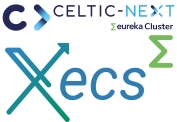
EUREKA CELTIC-NEXT & XECS
CELTIC-NEXT and Xecs are two EUREKA Clusters.
CELTIC-NEXT is the Cluster for Next-Generation Communications and ICT for a secured, trusted, and sustainable digital society. Its vision is to accelerate the deployment of advanced ICT services by employing the new network concepts of 5G and leading to the ownership and implementation of 6G in Europe, to stimulate innovative, industry-driven, competitive R&D projects in an increasingly digital society, enabling all industry verticals thanks to ICT technologies and Services.
Xecs is the Cluster for Electronics Components & Systems. Xecs cluster purpose is to catalyse R&D and innovation in areas of micro and nanoelectronics enabled systems and applications. The Xecs programme enables the development of electronic solutions to help drive the digital economy. Key application areas include mobility, energy, digital industry, health and wellbeing, agrifood and natural resources and digital society.
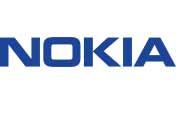
NOKIA
With every generation of communications technology, the focus of the network changes. The 2G and 3G eras centered on human-to-human communication through voice and text. 4G heralded a fundamental shift to the massive consumption of data, while the 5G era has turned its focus on connecting the Internet of Things (IoT) and industrial automation systems. In the 6G era, the digital, physical and human world will seamlessly fuse to trigger extrasensory experiences. Intelligent knowledge systems will be combined with robust computation capabilities to make humans endlessly more efficient and redefine how we live, work and take care of the planet. At Nokia, we believe 6G will not just build on existing technologies and systems, it will expand and transform what a network can do. It will liberate human potential, inclusively and sustainably. Nokia expects 6G systems to launch commercially by 2030, following the typical 10-year cycle between generations. Meanwhile, 5G will be enhanced by 5G-Advanced, which will be a key focus for 3GPP in Release 18 onwards and power commercial networks starting 2025 onwards, well before 6G arrives at the end of the decade. Powered by world-renowned research from Nokia Bell Labs, Nokia has been the forerunner in defining the fundamental technologies for the 5G era and beyond. To make 6G a reality before 2030, Nokia is leading Hexa-X, the European Commission’s 6G flagship initiative for research into the next generation of wireless networks.
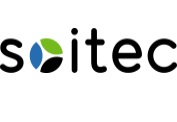
Soitec
Soitec is a world leader in the production of innovative semiconductor materials. The company leverages its unique technologies to serve the electronics markets. In meeting the technical and economic challenges of mainstream electronics, Soitec is helping to speed up the mobile and digital revolutions. Its products are used to manufacture chips that go into smartphones, tablets, computers, IT servers and data centers as well as electronic components in cars, connected devices, and industrial and medical equipment. With more than 3,500 patents, the company pursues a strategy of disruptive innovation to provide its customers with products that combine performance, energy efficiency and competitiveness. Soitec’s technologies, projects and industrial capacity make it one of the crown jewels of France’s industrial sector. Soitec is headquartered in Bernin France. The company was founded 25 years ago in Grenoble’s high-tech ecosystem and has manufacturing facilities, R&D centers and sales offices in Europe, the United States and Asia. Soitec is listed on the Euronext, Tech 40 Paris.
For more information please visit: www.soitec.com.

NEC Laboratories Europe
NEC Laboratories Europe research and develop cutting-edge technology to create innovative social solutions for the NEC Corporation. Located in Heidelberg, Germany, major research areas of NEC Laboratories Europe include artificial intelligence, blockchain security, 5G and 6G networks, and IoT platforms. NEC Laboratories Europe are advancing next-generation mobile systems by researching and developing open and virtualized radio access networks (O-RAN, vRANs), and reconfigurable intelligent surfaces (RISs).Visit the NEC Laboratories booth to learn more about NEC O-RAN, vRAN and RIS research.
Advancing wireless communications with NEC reconfigurable intelligence surfaces
NEC Laboratories Europe has developed a highly flexible reconfigurable intelligence surface (RIS) prototype that achieves passive beamforming with high spatial resolution codebooks. NEC RIS devices are modular, which allows the scale of the reflective surface be adapted to the use case.
Individual NEC prototype RIS cells can be configured to fully absorb the energy of RF signals. For instance, reflective components of RF signals can be switched off. This lets NEC RIS devices be virtually optimized to meet system constraints, and enables the energy of impinging signals on RIS devices to be repurposed, feeding active electronic components and providing full autonomy for NEC RIS devices.
Nuberu: A Reliable Distributed Unit for Virtualized Platforms
NEC Laboratories Europe has designed Nuberu: a distributed unit (DU) that is resilient to fluctuations in computing capacity within shared virtualized infrastructures. Nuberu guarantees the timely completion of a minimum set of signals that preserves the synchronization between itself and users of a shared virtualized infrastructure during computing capacity shortages while, simultaneously, maximizing network throughput.
To achieve these results, Nuberu uses techniques such as tight deadline control, jitter-absorbing buffers, predictive HARQ and congestion control.
For more information about NEC Laboratories Europe visit https://www.neclab.eu

ZTE
ZTE Corporation is a global leader in telecommunications and information technology. Founded in 1985 and listed on both the Hong Kong and Shenzhen Stock Exchanges, the company has been committed to providing innovative technologies and integrated solutions for global operators, government and enterprise, and consumers from over 160 countries across the globe. Serving over 1/4 of the global population, the company is dedicated to enabling connectivity and trust everywhere for a better future.
ZTE has complete end-to-end product lines and integrated solutions in the telecommunications industry. Bolstered with its all series of wireless, wireline, services, devices and professional telecommunications services, the company has great capability of flexibly satisfying the diversified requirements and pursuit for rapid innovations of global operators and government and enterprise network customers.
As a member of the United Nations Global Compact and the Global e-Sustainability Initiative, ZTE has published the Sustainability Report/Corporate Social Responsibility Report for 12 consecutive years starting 2009. According to Research Report on Corporate Social Responsibility of China 2018 issued by Chinese Academy of Social Sciences, ZTE ranks among the top 100 in terms of Social Development Index. Moreover, the company has been included among the FTSE4Good Index Series for four consecutive years since 2018. Looking forward, the company will be committed to building its core competitiveness in independent innovation in the 5G era, expecting to accelerate the global commercial deployment of 5G, leveraging its leading end-to-end 5G products and solutions.
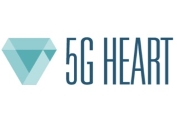
5G-HEART
Healthcare, transport and food verticals are hugely important in Europe, in terms of jobs, size (collectively surpassing €3Trillion) and export trade. Moreover, they are vital from a social perspective, for better patient outcomes, safer transportation and safer and more sustainable food production. 5G is important for these verticals, in terms of improvements for utility, efficient processes, safety among others. 5G-HEART as one of 5G PPP Phase 3 ICT-19 projects will deploy innovative digital use cases involving healthcare, transport and aquaculture industry partnerships.
Description of the Demo (200 words maximum, describing the technologies and/or applications being demonstrated) 5G-HEART performs vertical validation trials on top of all three ICT-17 facilities (5G-VINNI, 5G-EVE and 5Genesis) and two national 5G test platforms (5GTN and 5Groningen) with use cases from three different vertical domains: healthcare, transport and aquaculture. These three vertical industries and related connectivity use cases pose diverse technical requirements on wireless network connectivity. 5G-HEART offers the consortium partners, especially the end user partners, a unique opportunity to gain a head start in realising the 5G vision for healthcare, transport and aquaculture. 5G-HEART utilises an iterative process, which conducts the trials in three phases. The use case scenarios and the related trialling plans are revised during each trialling phase based on the results of the tests, the business analysis performed during the project, the discussions within the consortium and the feedback received from the stakeholders and the owners of the utilised testbeds. You can find our interim trial results in the project website and youtube channel. The selected trials are as follows: – Pellet detection using AI algorithm: https://www.youtube.com/watch?v=7LEzXhGCRP8 – Human tachograph using 5G and AI: https://www.youtube.com/watch?v=c7wDDPcG3J4 – Smart Junctions: https://www.youtube.com/watch?v=SZU2boJxAnM – Aquaculture using 5G: https://www.youtube.com/watch?v=Zie9XTMwOCE
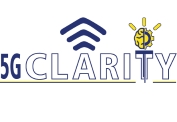
5G-CLARITY
Beyond 5G Multi-Tenant Private Networks Integrating Cellular, Wi-Fi, and LiFi, Powered by Artificial Intelligence and Intent Based Policy
The 5G and beyond 5G systems are aiming to support stringent requirements in terms of availability, reliability, low latency, and positioning. To meet such requirements 5G-CLARITY brings forward the design of a system for beyond 5G networks with a vision of (i) a heterogeneous wireless access network that integrates three technologies, namely, 5G beyond R16, Wi-Fi, and LiFi; and (ii) a novel management plane based on the principles of Software Defined Networking (SDN) and Network Function Virtualization (NFV), and powered by Artificial Intelligence (AI) algorithms to enable network slicing for neutral hosts, and autonomic network management for 5G-Advanced networks.The following technologies adopted by the project will be demonstrated. Multi-connectivity framework: A key enabler to increase available wireless resources in user-dense environments to provide high data rate and to enable redundant transmission through disjoint paths. It will also be used to achieve cm-level positioning accuracy by combining positioning signals obtained from different wireless access technologies (WAT).Zero-touch provisioning practices in public-private network environments: Important use cases for private networks in Industry 4.0 will require multi-tenancy support and service performance isolation via dedicated and well-isolated resources between different operation technology domains within the factory floor to protect production lines.
1. 5G-CLARITY Multi-connectivity Framework: demonstrates the 5G-CLARITY multi-WAT aggregation between 3GPP and non-3GPP access technologies protocols. The demo considers 5GNR, WiFi-6, and LIFI technologies integration into a 5G-CLARITY CPE designed to be placed in mobile devices requiring high bandwidth and resiliency while navigating through public and private networks. 2. 5G-CLARITY Multi-technology Positioning: demonstrate a positioning system that can retrieve real time information about the position of the user devices from multiple WATs. The data gathered from various WATs is going to be processes by fusion algorithms to improve positioning accuracy.3. ETSI ZSM Proof-of-Concept: demonstrates the ability to provision a tailored 5G private network for an industry 4.0 service, upon request (on demand), with no human intervention (zero-touch). This private 5G network will be deployed as a PNI-NPN, and will enable autonomous AGV navigation in a factory for intralogistics. In particular, the PoC will showcase automation capabilities when provisioning this PNI-NPN and service atop.4. Intent-Based NLoS Prediction: demonstrate the integration of an AI-based NLoS identification algorithm inside an AI engine and an intent engine that interacts with other entities in the network to deliver the output of the requested intents. This demonstration is subject to internal approval from the contributing project partner(s).
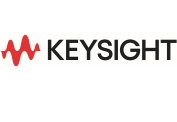
Keysight
6G research is underway and is expected to be commercialized by 2030. The next generation of cellular will expand upon and go far beyond the capabilities of 5G, marking a new era of wireless that accelerates digitalization and drives business innovation across critical industries. As a founding member of the 6G Flagship program, Keysight is with you every step of your innovation journey. Keysight delivers advanced design and validation solutions that help accelerate innovation to connect and secure the world. Keysight’s dedication to speed and precision extends to software-driven insights and analytics that bring tomorrow’s technology products to market faster across the development lifecycle, in design simulation, prototype validation, automated software testing, manufacturing analysis, and network performance optimization and visibility in enterprise, service provider and cloud environments. Our customers span the worldwide communications and industrial ecosystems, aerospace and defense, automotive, energy, semiconductor and general electronics markets. Keysight generated revenues of $4.9B in fiscal year 2021. For more information about Keysight Technologies (NYSE: KEYS), visit us at www.keysight.com.

VIRGINIA DIODES INC.
VDI manufactures state-of-the-art test and measurement equipment for mm-wave and THz applications. These products include Vector Network Analyzer, Spectrum Analyzer and Signal Generator Extension Modules that extend the capability of high performance microwave measurement tools to higher frequencies. VDI’s component products include detectors, mixers, frequency multipliers and custom systems for reliable operation at frequencies between 50 GHz and 2 THz. All VDI components include in-house fabricated GaAs Schottky diodes and microelectronic filter structures.
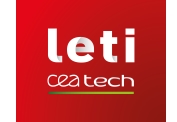
CEA-LETI
Organiser of the conference.
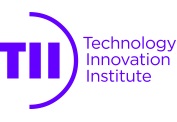
Technology Innovation Institute – Sole Proprietorship L.L.
The Technology Innovation Institute (TII) is a pioneering global research center that focuses on applied research and new-age technology capabilities. It serves as the dedicated applied research pillar of the Advanced Technology Research Council (ATRC). The institute has seven initial dedicated research centers in Quantum, Autonomous Robotics, Cryptography, Advanced Materials, Digital Security, Directed Energy, and Secure Systems. The Institute’s agile approach ensures that it is unhindered by the barriers and bureaucracy often associated with research and development. TII advances research rapidly through a defined research roadmap, approved research funding, and state-of-the-art-facilities. By working with exceptional talent, universities, research institutions, and industry partners from all over the world, the Institute connects an intellectual community and contributes to building an R&D ecosystem in Abu Dhabi and the UAE. The Institute pursues the development of breakthrough technologies that have practical use-cases and global impact. Technology Innovation Institute reinforces Abu Dhabi and the UAE’s status as a hub for innovation and contributes to the broader development of the knowledge-based economy. For more information, visit www.tii.ae
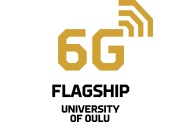
6G Flagship
Technical Co-Sponsor
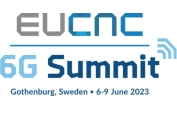
EuCNC & 6G Summit 2023
Welcome to Gothenburg, Sweden!
EuCNC & 6G Summit 2023 will be held in Gothenburg, Sweden June 6-9 2023. The 2023 EuCNC & 6G Summit builds on putting together two successful conferences in the area of telecommunications: EuCNC, in its 32nd edition of a series, supported by the European Commission; the 6G Summit, in its 5th edition, originated from the 6G Flagship programme in Finland, one of the very first in its area. The conference is sponsored by the IEEE Communications Society (ComSoc) and the European Association for Signal Processing (EURASIP) and supported by the European Commission. The conference addresses various aspects of Beyond 5G/6G communications systems and networks. It brings together cutting-edge research and world-renown industries and businesses, globally attracting in the last years more than 1 300 delegates from more than 40 countries all over the world, to present and discuss the latest results, and an exhibition with more than 70 exhibitors, for demonstrating the technology developed in the area, namely within research projects from EU R&I programmes.
The conference program will include:
- Keynotes
- Panels
- Regular oral sessions (papers from open call, to be submitted for uploading to IEEE Xplore)
- Special and Convened sessions, with papers on specific topics
- Workshops, with papers and presentations on specific topics
- Poster sessions (extended abstracts from open call addressing latest results)
- Tutorials
- Demos and exhibitions, with pitches.
Memorable moments in Gothenburg
Situated in the heart of Scandinavia, on the west coast of Sweden, Gothenburg combines distinct charm with the pulse of modern urban life and creative atmosphere.
Open
With the city’s coastal location, you can easily explore the tranquil archipelago. Would you rather stay in the city, nature is always close in Gothenburg.
Gastronomic brilliance
No wonder food lovers feel right at home in Gothenburg. Here you’ll find excellent fish and shellfish, innovative kitchens, hip food trucks and Michelin-starred restaurants that use the finest locally grown produce.
Congress venue
The Swedish Exhibition & Congress Centre and Hotel Gothia Towers, has a great location in the city centre – with only walking distance to restaurants, parks, shops and attractions.
Welcome to our Booth at EuCNC & 6G Summit 2022 to find out more!
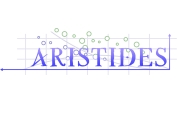
ARISTIDES
End-to-end learned neural coded modulation for the 6G physical layer
Recent advances in the application of AI/ML have focused on enhancing the design of communication systems towards a fully AI-native air interface for 6G. It has been shown in several contexts that a data-driven approach to the design of PHY layer functions has the potential to complement and sometimes outperform the traditional, model-driven designs. In particular, the concept of end-to-end (E2E) learning of the PHY layer of wireless communication systems has attracted considerable attention. There are multiple advantages to this approach: i) it allows to design efficient PHY layer functions even in situations where mathematical models become intractable and optimal schemes are unknown, ii) hybrid model/data-driven architectures have already proven to surpass conventional systems in several scenarios, iii) the end-to-end learning paradigm can lift the functional separation between different processing blocks to further boost performance, iv) it paves the way towards minimizing the amount and complexity of technical specifications in wireless communication standards, v) the creation of datasets for supervised learning is simple, since one can rely entirely on synthetic, automatically labeled datasets. On the hardware side, high-performance software-defined radio modules have become increasingly affordable, so that a 5G/6G air interface can be simulated in realistic conditions and offer a playground for experimental validation of proposed 6G PHY layer solutions. In this context, we aim to make an over-the-air demonstration and offer a graphical visualization of PHY layer schemes that are end-to-end learned. Specifically, we focus on the joint design of coding and modulation, which is one area where important improvements over state-of-the-art, separation-based, quadrature amplitude modulation (QAM) schemes, have been recently demonstrated. This research is carried out within the ARISTIDES project, funded by the Spanish Ministry of Economy and Competitiveness. It aims to deepen the theoretical understanding and advance on the performance of data-driven learning and inference algorithms for high-dimensional data processing. A special focus is set on the development of machine learning methods. The algorithmic tools investigated include (i) random matrix theory to better model the behavior of kernel-based learning algorithms; (ii) structured sparsity methods to reduce the dimensionality of complex learning problems with a large number of features; (iii) Bayesian inference to enrich learning algorithms with any prior information on the underlying model; and (iv) coded computing strategies to speed up the execution of learning algorithms executed in a distributed manner.
Our setup is composed of the following inventory of hardware and software components:* 2 Ettus Research USRPs X310 and a total of three daughterboards * 1 GPU-equipped laptop for controlling the USRPs and for displaying the learned constellations and performance curves in realtime * 4 omnidirectional antennas. For the NOMA uplink demonstration (resp. two-way relay channel), two transmitters (resp. transmitters/receivers) and one receiver (resp. relay node) * Display of realtime block-error rate measurements in comparison between baseline scheme (QAM constellation + network coding) and the E2E learned scheme (learned constellation for physical-layer network coding) NVIDIA’s open-source Python framework Sionna (https://github.com/NVlabs/sionna) has been very recently announced to the research community. It allows for rapid prototyping of PHY communication systems. We resort to this library for our simulations. NOTE: This demo is adequate for the general public, since the 3D visualization is very appealing and is specifically designed to give the observer a means of intuitively appreciating the power of AI and deep learning for improving the coding strategies for wireless systems. Using a laptop screen and a holographic fan, we have already shown a simpler, point-to-point version of this demo at the Mobile World Congress 2022 (which is directed at a general audience), where it has proven highly successful in catching the interest of visitors at our booth. We will use the holographic fan in this demo too. In addition to our demo, there will be information about key outcomes/results from the ARISTIDES project in general (e.g., via roll-ups and/or a slideshow).
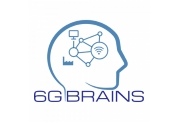
6G BRAINS
Private 5G network, known as Non-Public Network (NPN) in 3GPP terminology, allows the use of 5G technologies to create a dedicated network with unified connectivity, optimised services and a secure means of communication within a specific area. A private network can be run either by the company itself or a third party, based on the same or different spectrum owned by mobile network operators. The private networks 5G market is expected to see significant growth in the next few years. A recent study estimates the private LTE and 5G network market in $4.7 Billion in annual spending in 2020 and it is expected to grow nearly $8 billion by the end of 2023. This study estimates that as much as 30% of that investment will be directed towards the build-out of private 5G networks, as 5G becomes the preferred wireless connectivity medium to support Industry 4.0 and other verticals. Private networks are positioned to address the increasing demand for access to communication services by vertical industries in particular Industry 4.0, pushing a true digital transformation across manufacturing industries and other verticals. This exhibition & demonstration booth is organized by 5G-PPP project 6G BRAINS. The booth will provide a holistic view of 6G BRAINS project, covering vertical use cases, operation aspects, business models, trials and emerging technologies.
This exhibition & demonstration booth is organized by 5G-PPP project 6G BRAINS. The booth will provide a holistic view of 6G BRAINS project, covering vertical use cases, operation aspects, business models, trials and emerging technologies. We are planning to provide different materials in this booth: 1) Two posters presentation on 6G BRAINS industry usecase and technology 2) A video presentation of 6G BRAINS projects 3) Testbed bideo presentation on mmW uplink test and indoor visible light positioning testbed. RunEL MWC Demo describes RunEL 5G solution for Sports Stadiums that consist of a complete self-contained on site network that combines a 5G URLLC system with the capability to measure the location of 5G User terminal end devices and sensors with 1 cm accuracy.

Orange
Orange is one of the world’s leading telecommunications operators with sales of 42.5 billion euros in 2021 and 137,000 employees worldwide at 31 March 2022, including 76,000 employees in France. The Group has a total customer base of 278 million customers worldwide at 31 March 2022, including 232 million mobile customers and 24 million fixed broadband customers. The Group is present in 26 countries. Orange is also a leading provider of global IT and telecommunication services to multinational companies under the brand Orange Business Services.Orange’ s researchers explore technological breakthroughs, new use cases and innovative business models. They invent the technologies required to deploy the networks and services of the future in a world that is fully Digital and Human. We are one of the leading private-sector players in digital technology research in France. Orange is developing an open and differentiating research in order to:
– shine a light on the future, identify risks, explore and build opportunities,
– build strategic assets, skills, intellectual property, standards, partnerships,
– fuel innovation for our products and services and improve the effectiveness of our infrastructure
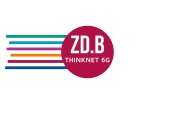
THINKNET 6G
Thinknet 6G is a think tank and network community for all organizations and stakeholders worldwide who are interested in any aspect of 6G. Thinknet 6G stimulates networking and exchange within the wireless industry, and between the wireless industry and other sectors who are important use cases for 6G.Our flagship event, the Thinknet 6G Summit, is an annual international congress focussed on 6G research and development. Thinknet 6G is funded by the Bavarian Ministry of Economic Affairs, Regional Development and Energy. It is hosted at Bayern Innovativ GmbH, the innovation agency for the free state of Bavaria.
We will present the Thinknet 6G community and our activities, and invite those who are interested to join the community or to attend the Thinknet 6G Summit.
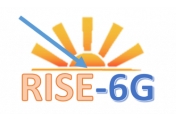
RISE6G
MmWaves access point extenders based on reconfigurable intelligent surfaces could be one of the key technology enablers for developing beyond 5G and 6G applications that are both efficient and energy sober . Indeed, as data rates demands are exploding, 5G and next 6G will soon rely on mmWaves that offer much higher bandwidths. Yet at these frequencies, attenuation and diffraction of waves require point to point communications with beamforming base stations that are complex and power greedy. Furthermore, since any obstacle at these frequencies completely blocks the waves, the networks must be extremely dense, resulting in dramatic increase of its cost. One way to avoid this problem is to redirect beams coming from base stations at many locations with Reconfigurable Intelligent Surfaces, in order to increase their coverage even in cluttered environments and track real time the users moving in this complex environnement.
We use a 20 cm×20 cm reconfigurable Intelligent Surface used as acce point extender alongside software defined radio and up/down converters at 28 GHz, and demonstrate a wireless link by streaming live video between a transmitter and a receiver without line of sight. Then, while the receiver moves continuously, we keep the data link constant by tracking the receiver using the real-time reconfigurability and passive beamforming capability of our access point extender.

HUAWEI
Founded in 1987, Huawei is a leading global provider of information and communications technology (ICT) infrastructure and smart devices. We have approximately 195,000 employees and we operate in over 170 countries and regions, serving more than three billion people around the world. Huawei’s mission is to bring digital to every person, home and organization for a fully connected, intelligent world. To this end, we will drive ubiquitous connectivity and promote equal access to networks to lay the foundation for the intelligent world; provide diversified computing power to deliver ubiquitous cloud and intelligence; build powerful digital platforms to help all industries and organizations become more agile, efficient, and dynamic; redefine user experience with AI, offering consumers a more personalized and intelligent experience across all scenarios, including home, travel, office, entertainment, and fitness & health.
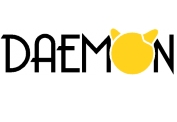
DAEMON
The success of Beyond 5G (B5G) systems will largely depend on the quality of the Network Intelligence (NI) that will fully automate network management. Artificial Intelligence (AI) models are commonly regarded as the cornerstone for NI design; indeed, AI models have proven extremely successful at solving hard problems that require inferring complex relationships from entangled and massive (e.g., traffic) data. However, AI is not the best solution for every NI task; and, when it is, the dominating trend of plugging ‘vanilla’ AI into network controllers and orchestrators is not a sensible choice.
Departing from the current hype around AI, DAEMON will set forth a pragmatic approach to NI design. The project will carry out a systematic analysis of which NI tasks are appropriately solved with AI models, providing a solid set of guidelines for the use of machine learning in network functions. For those problems where AI is a suitable tool, DAEMON will design tailored AI models that respond to the specific needs of network functions, taking advantage of the most recent advances in machine learning. Building on these models, DAEMON will design an end-to-end NI-native architecture for B5G that fully coordinates NI-assisted functionalities.
DAEMON plans to show the following demos:
(i) “Decentralized Infrastructure Monitoring for NI”
This demo presents Eclipse Zenoh’s Pubs/Subs and storages can be independently added to a live zenoh system. The main goal is to shows how zenoh can be used to support H2020 DAEMON Network Intelligent framework, especially how InfluxDB backend can be used for storing real-time freshly published data and to provide historic data for off-line processing e.g. for machine learning. In addition, this demo will present the Zenoh Administrative tool to visualize the data transfers.
(ii) “Nuberu: A reliable DU suitable for virtualization”
Nuberu is a novel pipeline architecture for 4G/5G DUs suitable for shared computing platforms guaranteeing the encoding of signals and control information to preserve user synchronization by temporarily holding off data delivery and relying on predictions.
(iii) “Federated Learning powered Anomaly Detection in B5G/6G”
The proposed solution utilizes Federated Learning algorithms and mechanisms during anomaly detection process in B5G/6G to achieve higher performance compared with the current.
approaches of anomaly detection: centralized and distributed.
The deployment is realized using a set of Linux containers which emulates gNBs and UEs and in which the federated learning clients and controller are deployed.
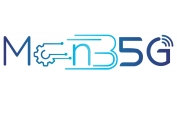
MonB5G
Distributed management of Network Slices in beyond 5G
H2020 MonB5G project aims a zero-touch management and orchestration system that can support network slicing at massive scales for 5G LTE and beyond. MonB5G is designed around a hierarchical approach that allows the flexible and efficient management of network tasks, while introducing a diverse set of centralization levels through an optimal adaptive assignment of monitoring, analysis, and decision-making tasks. The main objective of the exhibition is to demonstrate novel autonomic management and orchestration framework of MonB5G, heavily leveraging distribution of operations together with state-of-the-art data-driven AI- based mechanisms. More specifically, two main demos namely PoC-1 Zero-Touch Network and service management with end-to-end SLAs and PoC-2 AI-assisted policy-driven security monitoring & enforcement will be demonstrated to show the scalability and security implementation solutions of network slicing, management and orchestration of telecommunication networks in the field of 5G (and above).
Introduction of Concept Explanation of Concept Objective of the Demos Detailed use case descriptions PoC-1: Zero-Touch Network and service management with end-to-end SLAs PoC-2: AI-assisted policy-driven security monitoring & enforcement Conclusions.
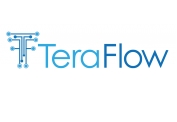
TeraFlow
Secured autonomic traffic management for a Tera of SDN flows
In February 2022, TeraFlow released the first version of the TeraFlow OS SDN Controller, which source is publicly available for download and installation at the GitLab repository https://gitlab.com/teraflow-h2020/controller under Apache2 license.The TeraFlow OS is one of the first open-source, micro-services bases, cloud-native and carried-grade SDN controller, aiming at integrating with current NFV and MEC frameworks and automating the management of B5G networks guaranteeing high levels of reliability, redundancy and security. To serve this purpose, TeraFlow OS has been designed as a cloud-native application with a potential remedy to the limitations of monolithic software. It is architected using micro-services (i.e., small, loosely coupled, computation services) that (via network messages) cooperate to realize the SDN controller activities. This design enables easier replication of the services allowing greater dynamicity, increased scalability, better load balancing, and high-availability features.
This demonstration will showcase a first proof-of-concept of a B5G-ready cloud-native SDN controller that integrates with NFV framework, and real and emulated equipment, all using standardized interfaces. The capabilities of the TeraFlow OS, and the integration of its components with external frameworks, are validated by means of two workflows: zero-touch device bootstrapping and monitoring, and L3-VPN service management.The TeraFlow OS components are implemented as microservices in Python (except Automation that is implemented in Java); they are deployed on top of a Kubernetes-based environment and rely on well-defined TeraFlow-specific gRPC-based messages and services for their internal communications. The Kubernetes environment is deployed at CTTC premises in Castelldefels (Spain). The Data Plane is distributed in two geographical locations, that are interconnected by means of a secured VPN connection. The emulated optical layer, located at CTTC premises, is controlled by means of an OLS Controller and exposes TAPI at its NBI. The packet layer, located at Telefónica I+D premises in Madrid (Spain), consists of 2 Infinera DRX30 routers controlled by means of Netconf/OpenConfig for both the configuration and the monitoring of the devices.The architecture of the demonstration considers the ETSI Open-Source Management and Orchestration (MANO) (OSM) to issue L3-VPN connectivity service requests, the TeraFlow OS components to handle the requests, and the data plane.
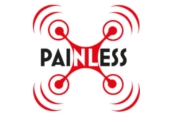
PAINLESS
The availability and reliability of the power grid is set to become a major bottleneck in providing connectivity in future generations of wireless networks. The rapid deployment of broadband internet access is paramount in emergency network deployment for rapid connectivity provisioning in disaster areas, as well as in broadband provisioning in massive-scale social events such as sports events and concerts, with limited access to power grid. A paradigm shift from energy-efficient (EE) networks to energy-neutral (EN) networks is hence vital, towards enabling self-powered networks that are unplugged from any fixed infrastructure (“infrastructure-less”). The pursuit of such technological solutions is further motivated by the emerging unmanned aerial vehicle (UAV) applications in rapidly-deployable communication networks. When a natural disaster / accident impedes infrastructure (transport, communications and power), drones can be deployed quickly to survey the area for search and rescue, to deliver supplies for first aid and to provide emergency communications. In remote areas, deploying drones as aerial base stations (ABSs) is more cost-effective than building ground cellular towers. Such energy-neutral operation can be achieved through a combination of cost-effective recharging of the batteries, e.g. by using excess self-generated power or recharging during low-traffic time.
1. DRONESS – The GUI allows a user to input the mission-related parameters such as the location and the dimension of the region to be served, the positions of the nodes, the type of UAVs used, e.t.c. It also provides a higher level of different aspects of the scenario characterization, including communication requirements, UAV specifics, energy system elements, and control variables. As outcomes, it gives the trajectory variables and the CS configuration for the mission inputted. (https://drive.google.com/file/d/1nnUvI1qb4-l3fjVQEOFSWps2Di8uL4pS/view?usp=sharing) 2. Emulator- EMANE allows us to fine-tune the physical characteristics of the network (signal propagation, communication modes, interference, etc) and CORE lets us apply movement scenarios to the UAV and visually identify its position and status. Combined with the use of LXC containers, we can be confident that our readings from these tools will give us true-to-life results and configurations that are easy to deploy to physical hardware. 3. Hardware prototype- The Huawei access point mounted on the hexacopter acts as an aerial access point (AAP). The front haul part is provided by an inbuilt EEE 802.11 b / g / n module whereas the backhauling is done using a 4G LTE sim. The drone could carry weight up to 3Kg and has a flight time of 50 minutes.
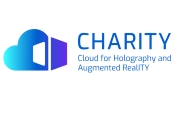
Charity
Next-generation of immersive services including advanced AR, VR and Holographic-based applications have been referred to as killer applications for the upcoming 5G beyond and 6G networks. Indeed, they represent one of the most demanding class of services with (extremely) strict requirements not only of the network itself but from an architectural or even human perceived quality of experience (QoE). Considering different immersive service categories (i.e., Real-time Holographic Applications, Immersive Virtual Training and Mixed Reality Interactive Applications), CHARITY focuses on understanding how an intelligent and autonomous framework spanning across edge/cloud continuum can facilitate their deployment and orchestration needs.
Three key applications will be showcased as part of the overall demonstration. These are VR Medical Training, VR Tour Creator and a Collaborative MR Gaming. First, VR Medical Training consists of an application for running surgical scenarios in a multi-user VR operating room using a MR headset. This represents an example of a typical VR application with high-processing needs which cannot be delivered only by local applications running on existing hardware devices. Then, VR Tour Creator, a web-based storytelling software for building and live streaming Virtual Reality interactive experiences which can greatly benefit from advanced adaptive streaming. And finally, a multiplayer and collaborative mixed reality mobile game based on a cloud-oriented architecture to showcase, among others, the complex challenge of mixing virtual and reality elements and synchronising their state across different users.

DEDICAT 6G
5G networks offer unparalleled data rates and features. However, these are still far from what a hyperconnected society and industry needs. Future wireless connectivity Beyond 5G (B5G)/6G will require a smart and green platform that is ultra-fast, highly adaptive and secure to support innovative, human-centric applications. This is the focus of the EU-funded DEDICAT 6G project that aims to develop a smart connectivity platform using artificial intelligence and blockchain techniques that will enable 6G networks to combine the existing communication infrastructure with novel distribution of intelligence (data, computation, and storage) at the edge to allow not only flexible, but also energy efficient realisation of the envisaged real-time experience. DEDICAT 6G focuses on four use cases: Smart warehousing, Enhanced experiences, Public Safety and Smart Highway. The use cases will pilot the developed solutions via simulations and demonstrations in laboratory environments, and larger field evaluations. The DEDICAT 6G exhibition aims to provide delegates with insights into the concepts and vision of DEDICAT 6G, and how the usage of intelligence distribution, dynamic coverage extension, enhance security, privacy and trust, human-centric applications and robots, drones and connected cars can help in building a smart connectivity platform for 6G.
The exhibition will showcase DEDICAT 6G concepts and elements from the Smart Warehousing, Enhanced Experiences, Public Safety and Smart Highway use cases. The Smart Warehousing demo aims to highlight the connection of the human and digital worlds for warehousing automation. An Augmented reality application for trainees will be demonstrated showcasing how the trainee user will be supported with information on the warehousing operations and his/her tasks, with enriched material e.g., images, sounds, videos, animations and 3D graphics. Remote controlled robots will perform automated product detection (using ML algorithms and image processing) and corresponding distribution of products to specific positions. An application utilising 3D graphics for the warehouse manager will be demonstrated that allows remote control and monitoring of robots within the warehouse (e.g., battery level, CPU, RAM, etc.). ORA-2 Smart glasses will be demonstrated in relation with enhanced experience and public safety use cases with live remote stream from the Finnish site depicting the current network performance metrics with 5G SA connectivity through web application. Several glasses will be at the booth and demonstrated to attendees. The AIRBUS Mission Critical application for first responders will be demonstrated in the scope of the Public safety use case.
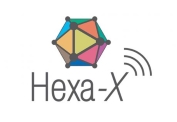
Hexa-X
The Hexa-X project is the flagship project in Horizon 2020 ICT-52 set of calls to pave the way towards the definition of a “fabric” for the future 6G system. The results achieved in the first months of activity will be lively presented in the booth, with videos and interactive contributions. A specific demo being developed in the project is presented as well, on virtual reality controlled cobots. Driven by the forecasted consumer interest for automation, Cobots and VR on a massive scale, we investigated how a human can be involved (HMI – Human Machine Interaction) in industrial tasks and user’s interaction with digital twins via Virtual Reality (VR) technology with immersive realistic 3D graphics. Thanks to research on AI enabled mobile robotics and B5G/6G innovative wireless connectivity, it’s now possible to enable remote and real time, control, monitoring, digitalisation and automation in industrial environments with multiple automated guided vehicles (AGVs), autonomous mobile robots (AMRs), industrial robotic arm and even drones.
Title:Hexa-X: project overall results and demo on digital twin and virtual reality controlled cobots in real time for industrial environments.Description:Digital Twin and automated industrial task with three cobots, each one has a specific task (production, repair, shipping). The robots perform a product quality check with image processing (good, fail) at the production line and distribute the products in the respective positions. The three cobots exchange the products with their robotic arms and work together to continue the industrial process cycle. The Virtual Reality user is able to watch and interact with their digital twins, examine their exact location on the site and their status condition (battery level, mode (automation or teleoperation), RAM, CPU, running services, etc.) at all times. Watch the real-time streaming cameras of the robots (through which they also carry out the respective procedures) as well as other cameras (e.g., whole industrial environment). Finally, the Digital Twin or VR user can supervise, monitor, teleoperate and intervene in the whole process, stop it in case of an unexpected situation and even guide the robots with the remote-control operation outside the production line to an engineer nearby to fix a possible problem or change the battery of the robot and continue with the process as before.Size of booth: 12 m2

5G PPP – 6G SNS JU
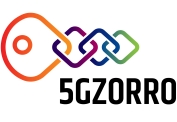
5GZORRO
Current 5G network solutions struggle to support the deployment of truly pervasive services, resources and network slices in a multi-stakeholder environment, lacking also the required levels of trust, security and accountability. In this context, Distributed Ledger Technologies (DLTs) can be adopted to implement distributed security and trust through Smart Contracts among multiple non-trusted parties. In addition, the 5G network solutions currently standardised and deployed do not yet enable the full expected potential. Network services and slices with different QoS profiles do not span multiple operators; security, while trust and automation are limited. The evolution of 5G towards a truly production-level stage needs to heavily rely on automated end-to-end network operations, use of distributed Artificial Intelligence (AI) for cognitive network orchestration and management, with minimal manual interventions (zero-touch automation).
5GZORRO provides a zero-touch security and trust architecture for ubiquitous computing and connectivity in 5G networks. The proposed demo aims at showcasing cross-domain orchestration mechanisms by coupling Smart Contracts anchored in DLTs with AI-driven operations and service lifecycle automation in multi-tenant and multi-stakeholder environments.
The proposed demonstrations aim at showcasing several 5GZORRO capabilities in support of a telecom martkeplace for trading and acquiring multi-provider 5G product offers, with smart contracts based on DLTs, and AI operations through cross-domain zero-touch service, network and security management. In particular, three main demonstrations, mapped to the project use cases, are planned to highlight the following 5GZORRO functionalities:
Demo 1:
– DLT enabled stakeholders onboarding into the 5GZORRO marketplace
– Multi-provider end-to-end 5G service and slice product offers creation and composition in the 5GZORRO marketplace
– Automated smart contracts creation and management (with tracking in the marketplace DLT) upon acquisition of end-to-end 5G slice product offers
– AI-driven end-to-end 5G slice orchestration and provisioning of edge and core resources and services across multiple providers with cross-domain security
Demo 2:
– Digitalisation of spectrum resources through SpecTokens anchored in the marketplace DLT
– Automated acquisition and provisioning of spectrum resources
– Spectrum resource use and SLA monitoring with automated data aggregation and cross-domain Data Lake
Demo 3:
– AI-driven SLA breach prediction for vCDN services
– Automated and intelligent discovery and selection of 3rd party edge compute resource product offers upon SLA breach prediction
– AI-driven runtime operation and optimization of end-to-end 5G slices with extension of vCDN services
– E-licensing management for validation and monitoring of VNF licenses

5G-SOLUTIONS
5G-SOLUTIONS is a flagship 5G-PPP project supporting EC’s 5G policy by implementing the last phase of the 5G cPPP roadmap. It aims to prove and validate that the 5G capabilities provide prominent industry verticals with ubiquitous access to a wide range of forward-looking services with orders of magnitude of improvement over 4G, thus bringing the 5G vision closer to realisation.
The project will present several demonstrations, both on site (in the Exhibition Plant) and remotely connected. One of the main topics will be the demonstration of the use case devoted to Ultra High-Fidelity (UHF) Media which addresses the full set of the 5G-SOLUTIONS enables, CDSO, ZTA, VS and supports VNF, Open Slice, etc. as well. In any case, in the booth there will be demos across all the 4 living labs (Industry 4.0, Smart Energy, Smart Cities and Ports, Media and Entertainment) as well as a multi-living lab where multiple experiments shared concurrently the same platform is considered. A short video presenting the demand side management use cases in Vertical Smart Energy and explaining motivations and logic will be displayed.

5GMED | 5GBlueprint | 5GRoutes
Sustainable 5G Deployment Model for Future Mobility in the Mediterranean Cross-Border Corridor | Next-Generation Connectivity for Enhanced, Safe, and Efficient Transport and Logistics | 5th Generation Connected and Automated Mobility Cross-Border EU Trials
5GMED, 5G-Blueprint, and 5G-Routes are projects executed under the Horizon 2020 programme framework – 5G for Connected and Automated Mobility. Part of 5G-PPP, the projects address several challenges, which currently impede a smooth provision of CAM services in cross-border scenarios. 5GMED will design a common roads/railways 5G infrastructure architecture, with proven sustainable business models, demonstrated investment viability and scalability potential. The architecture will be suited by design to pervasively respond to both CCAM and FRMCS functional requirements, with cross-border, shared, and secured services’ functional continuity, In addition to addressing several technical challenges, 5G-Blueprint investigates the governance/legal issues pertaining to the deployment of cross-border teleoperated transport based on 5G connectivity and seamless services on the Netherlands-Belgium border, 5G-Routes conducts advanced field trials of most representative and innovative CAM applications seamlessly functioning across a designated 5G cross-border corridor (‘Via Baltica-North’) spanning across 3 EU member states borders (Latvia-Estonia-Finland).
No demonstration, just videos, roll-ups, and brochures.

FUDGE-5G and Affordable5G
FUDGE-5G and Affordable5G (Joint Technical Demo)
The 3GPP work on disintegrating Access and Core Networks originated from the requirement of multi-vendor 5G deployments and a desired increased flexibility on which functionality is required by operators. Along with the advances in cloud computing enabling an economy-at-scale, splitting functionality into Distributed and Central Units and disintegrating Core Networks into cloud-native Network Functions enabled the objective of multi-vendor deployments. Based on these advances, the realm of Private Networks arose allowing for much more customised and fine-tuned 5G deployments for specific verticals where only a subset of functionality is required. e.g. no billing or mobility, or a new one added, e.g. Time Sensitive Networking Support.
Utilising the SBA capabilities, the first part of the demonstration allows to deploy 5GC on-premise and have it operational with a gNB within two minutes. This is then mixed with a hybrid deployment where the UPF is located on premise and all other required 5GC NFs in the cloud. The third deployment, instead, has the entire 5GC in the cloud. All on-premise deployments utilise the same SBA platform. For all three deployments, a Vertical Health Monitoring application will be orchestrated on-premise allowing to demonstrate the functional readiness of all 5GCs. The part of Affordable5G demonstration aims to show the support of intelligence control loop 2 in O-RAN, by adopting open software solutions and embracing the concept of Zero-Touch Automation (ZTA). The demo makes use a Deep Reinforcement Learning (DRL) algorithm that is declared as an xApp in the Near-RT RIC establishing an AI-control loop for a continuous radio parameters optimisation. Both demonstrations are linked through the same 5G Core instance in the cloud.

5G-COMPLETE
5G-COMPLETE’s proposal for a unified 5G network architecture targets to efficiently combine compute and storage resource functionality over an ultra-high capacity converged digital/analog Fiber-Wireless (FiWi) Radio Access Network (RAN). By employing the recent advances in Ethernet fronthauling introduced by the eCPRI standard as a launching point, 5G-COMPLETE introduces and combines a series of key technologies under a unique architectural proposition that brings together i) the high capacity of fiber and high-frequency radio, ii) the audacity of converged FiWi fronthauling, iii) the spectral efficiency of analog modulation and coding schemes, iv) the flexibility of mesh self-organized networks, v) the efficiency of high-speed and time-sensitive packet-switched transport, vi) the rapid and cost-efficient service deployment through unikernel technology and finally vii) an enhanced security framework based on post-Quantum cryptosystems. 5G-COMPLETE’s proposed converged Computing/Storage/RAN infrastructure effectively merges the 5G New Radio fronthaul/midhaul/backhaul faculties into one common Ethernet-based platform and transforms the RAN into a low-power distributed computer that shapes new network concepts.
• 5G Complete overview, including its end-to-end architecture, use cases, technologies, and demonstrator testbeds. • Video of a demo that shows the 5G-COMPLETE orchestration framework performing the provisioning of a Vertical Service together with the configuration of the related Network Slice (VApp + virtual 5G Core + emulated ran). • Video of a demo that shows the wireless mmWave extension of an optical transport stream carrying real traffic generated from SFP transceivers. This stream is part of the optical switching-based hybrid transport layout of 5G-COMPLETE. • Video of a demo showing Interoperability in spawning containers, VMs, and unikernels on 5G-COMPLETE’s MEC systems software stack. This video shows the spawn of simple containers servicing a static HTML page on diverse nodes (x86 & aarch64). Additionally, it contains the early integration of hardware acceleration functionality in serverless computing via an image classification operation running as an OpenFaaS function on the 5G-COMPLETE systems software stack.
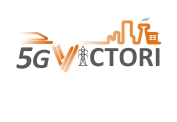
5G-VICTORI
VertIcal demos over Common large scale field Trials fOr Rail, energy and media Industries
In support of the overall 5G vision, aiming to offer services to a variety of new industrial stakeholders (Vertical industries), and support new business models and opportunities, 5G-VICTORI has proposed a novel architectural approach to facilitate a 5G platform with increased functionality and flexibility. This aims at transforming traditionally closed, static and inelastic network infrastructures into open, scalable and elastic ecosystems that can support a large variety of dynamically varying applications and services. The overall project activities bring together technology players, vendors, operators and verticals orchestrating their interaction with the aim to create new business models for a variety of vertical industries and to enable cross-vertical collaborations that can offer further enhancement in value propositions. 5G-VICTORI is adopting a flexible 5G architecture and a variety of advanced 5G technologies comprising and integrating together commercially available solutions, open-source platforms and innovative technologies developed in the framework of the project. In this context, the proposed exhibition aims at showcasing how open and multi-technology 5G infrastructures can be exploited in support of vertical industry requirements and services offering a suitable environment not only in support of service delivery, but also of sharing required resources and functions in a controlled and secure framework.
CDN demo enabled by mmWave connectivity in a railway environment– tests in a Deutsche Bahn depot in Berlin where “data showers” with large sets of media assets, enabled by mmWave comms, are synchronized to the train @ 50 km/h. Smart Factory Use Case 1) smart private 5G enabled network of energy efficient sensors and the corresponding management system, able to support preventive maintenance a high voltage critical infrastructure. 2) 5G enabled surveillance system with unmanned vehicles/robots that inspect the high voltage facilities. Mobility management solution for Railway environment control of handovers along a track-to-train communication path using a P4-based software switch. OpenAirInterface (OAI) will be used as the application that is hosted on top, establishing connections to the core network. Infotainment and public safety E2E 5G SA solution with OAI network slicing support, where slice deployed services using open tools, critical traffic prioritization in RAN and video analytics solution. 5G-VICTORI Operation System for verticals to deploy new services and intelligently select the resources required to deploy that service based on performance profiles and create the necessary inter-connections to facilitate the service. 360 video livestreams (tour guide in Bristol and live classrooms) segmented and transcoded in the cloud and cached via CDN on an edge where one can enjoy the experience with AR glasses. Users @EuCNC with 5G handsets will connect via on-site OAI 5G HW. Rail signaling over a 5G cellular network, emulating rail signaling between Wayside and Onboard the train.
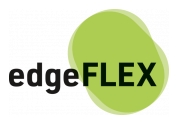
edgeFLEX
Providing flexibility to the grid by enabling VPPs to offer both fast and slow dynamics control services
With the dramatic growth of renewables, the Virtual Power Plant (VPP) concept needs renewal. VPPs need to support promotion of intermittent and distributed Renewable Energy Sources (RES) into the full scope of grid operations. Such a leap raises challenges: the optimal integration of RES into a new generation of VPPs is needed to jointly provide grid supportive grid flexibility. Both slow reaction time services used for trading on the day-head and intra-day markets, as well as fast reaction time services needed for frequency and inertial response and voltage control ancillary services must be supported. 5G addresses these challenges supporting short reaction times with 5G-powered edge clouds enabling a data driven approach to grid management in near real-time. edgeFLEX proposes a new architecture for VPPs deploying a multi-layer solution, in which the communications layers correspond to the multiple layers of power system dynamics. This architecture brings VPPs to a new level enabling policy-based grid management and has been deployed in the live edgeFLEX field trials. A novel 5G-API improving ease of use for 5G networks addresses the requirements of the power system owners. The results of 5G tests of new services will be demonstrated.
The demonstration will show the results of the 5G tests of new power services over standard and prototype URLLC enabled 5G networks. The edgeFLEX data-sharing platform, driven by a simulated data, will visualise the output of the services. Videos of the live 5G tests will complement the demonstration of the platform. The simpler parts of the edgeFLEX story on how 5G enables consumers joining Energy Communities to play a role in grid flexibility and how 5G enables new grid management services will be understandable to the general public.
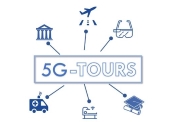
5G-TOURS
5G-TOURS is an ICT-19 funded 36month duration project developing and trialling use cases in the Tourism, Transport and Health sectors. In this, the final year of the project, 5G-TOURS has a maturing testbed proposition utilising and building upon the 5G-EVE infrastructure investments in Turin, Rennes and Athens. 5G-TOURS is motivated to promote the findings of the project and support the adoption of 5G in vertical industries through increased understanding of the technical and business merits of the use cases.
The project will bring posters, videos and at least one demonstration from the project to the exhibition. Whilst there will be a demonstrator on the stand which we anticipate to be linked to the Health cluster as this is present in Rennes in France, we will also bring insights through posters, presentations, videos, and leaflets from the other testbed activities in Athens (Transport sector) and Turin (Tourism sector). The use case(s) to be demonstrated at the venue are to be confirmed based on the available connectivity at the venue and facilities that are available at the stand. We antipcate and VR/AR based demo in the Health sector and possibly also a use case using a similar platform from the tourism sector (subject to costs and availability of equipment for transport).

Towards Wireless 5G Operating Room
Tracks addressed by the demo:- NET – Network Softwarisation- VAP – Vertical Applications and Internet of Things- OPE – Operational & Experimental InsightsThis demonstration is based on a Use Case identified in H2020 5G TOURS project (in the safe city domain). The on-site experimentation at the hospital, built on H2020 5G EVE French pilot node in Rennes, involves the following partners: Orange (Orchestration), b<>com (AR, Core Network, 5G EVE node operation), Nokia (RAN), AMA (Smart glasses), CHU Rennes (Operating Room and in situ experimentation).5G technology is considered here as an enabler for Augmented Reality (AR) applications which have strong growth potential in clinical practices (such as needle biopsy and surgery guidance) and require important amounts of video data to be transferred with very low latency. In this context, devices and wires see their numbers grow in the Operating Room (OR) and a way to reduce this number is to use 5G connectivity and transmission.
This demo is not a live demo but it will be the first public release of it. It is based on a video recorded during a trial performed in the scope of 5G-TOURS. The scenario for the trial considers a situation when a patient has to go under a cardiac intervention procedure, involving an image fusion application (Augmented Reality)• Live echography with ultrasound probe• Live X-ray imagingDuring the intervention, the cardiologist wears smart glasses and streams his view thanks to a 5G smartphone to the doctor of the patient who is remotely connected.The experimentation is built on a phantom to simulate a patient in « TherA-Image » operating room at Rennes University Hospital.Prior to the experimentation, a mmWave exposure assessment has been performed in the Rennes hospital surgery room in order to demonstrate EMF (Electro-Magnetic Field) mitigation of 5G private mobile networks.In order to provide a precise synchronization of the different incoming images, the augmented reality platform operates DICOM-RTV streams. DICOM-RTV is a standard based on the recent video over IP standards, SMPTE 2110, and enables the transfer of metadata, related to the video, such as patient information, device in use or tools position.
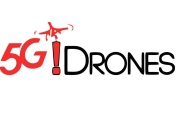
5G!Drones
Project is at it’s culmination stage, and we have contributed to 5GPPP, 3GPP, GSMA, EASA and other agencies. We would like to showcase a demo of our work at the EUCNC.
The 5G!Drones Project consortium will showcase and demonstrate various scenarios of how 5G technology can leverage UAV operations. Some of the demonstrations will include: BVLOS medical delivery over 5G network, use of UAVs & 5G technology for search and rescue operations, Airbus Mission Critical Systems over 5G, and we will also show how the KPIs for 5G can be applicable to UAV industry.
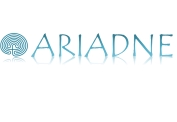
ARIADNE
5G and B5G communication networks have numerous new requirements involving different types of network entities and users with varying QoS requirements. Thus, it is challenging to achieve optimized resource management and reliable connectivity in statistical wireless environments, especially in D-Band, where signal losses dominate the quality of communication.
To overcome such challenges, ARIADNE applies both off-line and on-line Artificial Intelligence/Machine Learning methods to incorporate extra intelligence in the network. Therefore, a combination of Metaheuristics and Machine Learning algorithms are implemented for channel modelling and will be demonstrated as an example of off-line optimization. It is shown that predictive modelling aspects can help find the hidden non-linear relationships among different features for developing and deploying various KPIs focusing on accuracy, fading statistics, correlations, complexity, and versatility, which can improve the feasibility and viability of the model. Measurement and environmental data are provided by Aalto University.
Additionally, Deep Reinforcement Learning (DRL) is a powerful tool to tackle real-time dynamic decision-making problems and an example will be demonstrated for solving resource management/resource allocations problems in dynamic network environment. Specifically, we focus on beamforming optimization while RISs (Reconfigurable Intelligent Surfaces) are also considered to enhance user connectivity.
The demonstration is based on a combination of tools including a data science platform owned by RapidMiner, commercially available mathematical tools and open platforms for ML training.
Employment of Machine Learning algorithms to establish reliable connectivity, delivers a predictive outcome using Design Time Approach in which the solution is engineered to understand the dimensions of the problem and estimate the quality of the solution using experimental frame/GUI developed using React and RapidMiner studio for interactive exploration of predictive models. Gradually this process will trigger a pro-active handover process in order to identify the patterns depending on user mobility on different routes under outdoor/indoor environment in form of real time simulations.
DRL application towards optimization of radio resource allocation demonstrates two scenarios. In the first scenario, no blockage and no RIS deployment is considered while DRL is deployed to multi-user multi-input-single-output (MU-MISO) scheduler to maximize capacity of UEs in downlink transmission.
On the other hand, in a time-varying and unpredictable wireless environment, the impact of blockage is considered detrimental. Therefore, in the second scenario, we apply DRL based framework for proactive blockage avoidance with RIS-assisted communications.
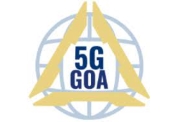
ESA ARTES 5G-GOA
ESA ARTES 5G-GOA – 5G-enabled Ground Segment
The ambition of 5G-GOA is to facilitate the implementation of emerging satellite services in the context of full integration among satellite and terrestrial networks in 5G. Therefore, the 5G-GOA consortium designs and implements the necessary modifications in the 5G New Radio standard to enable the direct radio access via geostationary satellites to terrestrial communication networks, a 5G RAN via satellite, closely following the 3GPP Work Item on Non-Terrestrial-Networks. The 5G-GOA hardware and software development uses existing technologies, hardware and software components already available from the open-source project OpenAirInterface™ for the prototyping of 5G systems. Our solution follows strictly 3GPP discussions and results and spans from physical layer techniques up to specific protocols and upper layer implementations of the radio access network, as needed. 5G-GOA focuses exclusively on geostationary satellite systems.
5G-GOA consortium will demonstrate its developments and the OpenAirInterface™ extensions that are necessary for NTN experimentation and validation considering the geostationary communication satellite scenario. The demonstration will showcase an initial lab demo of the core testbed functionality.










